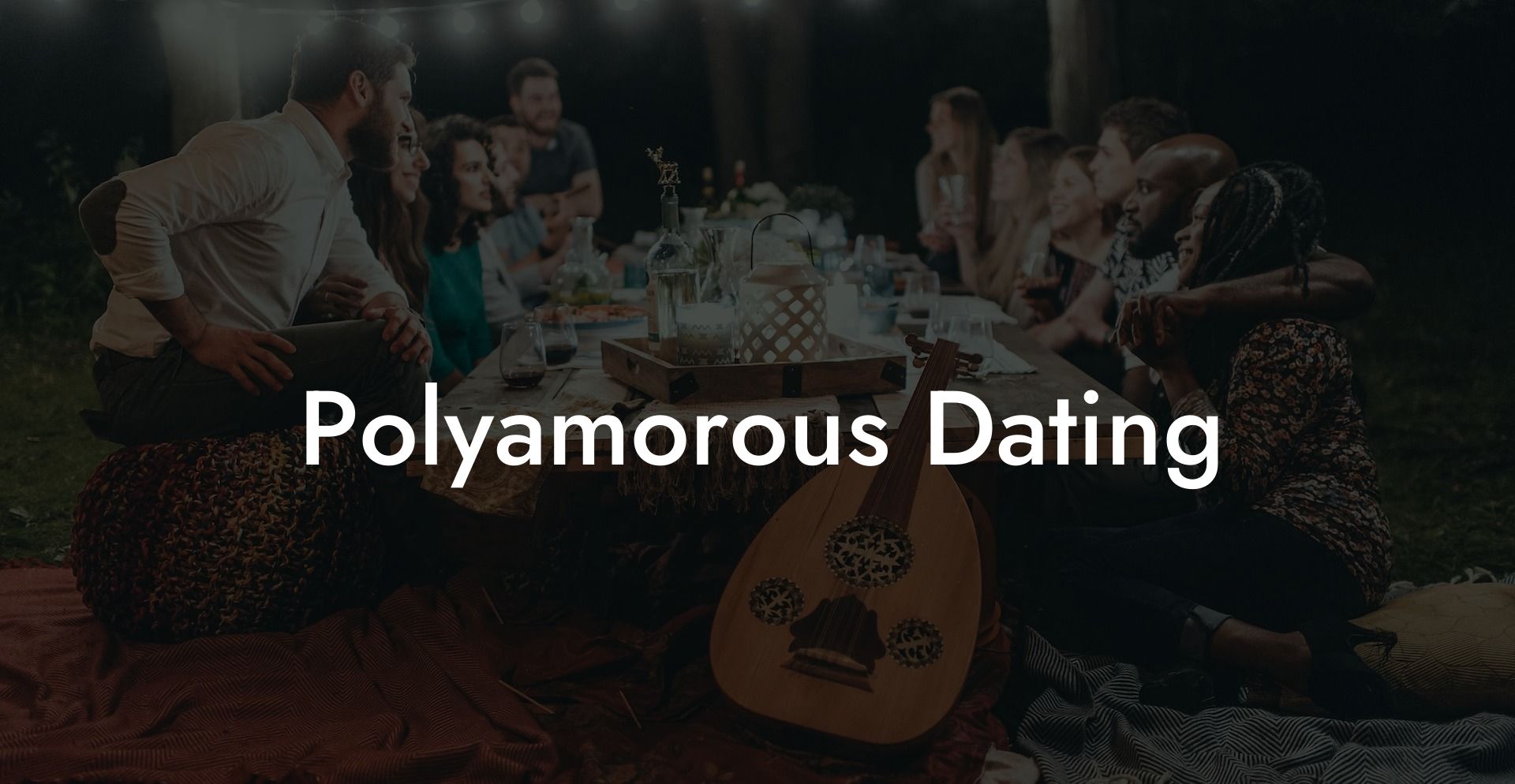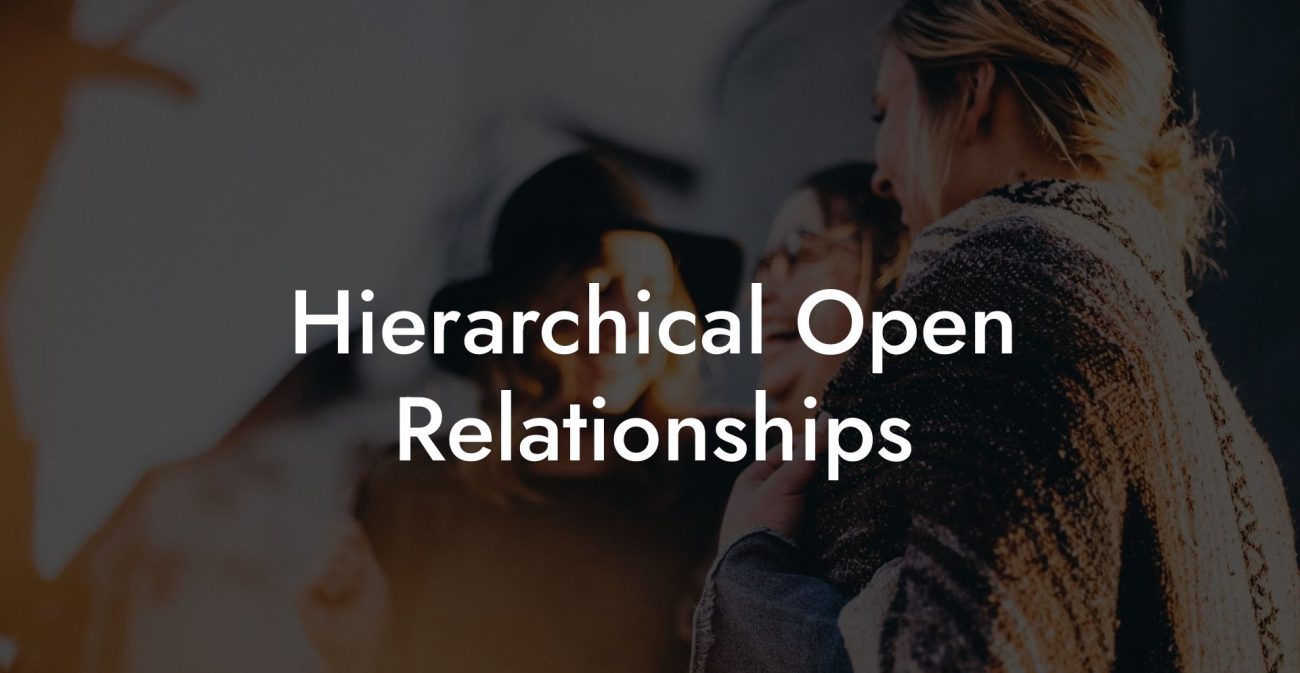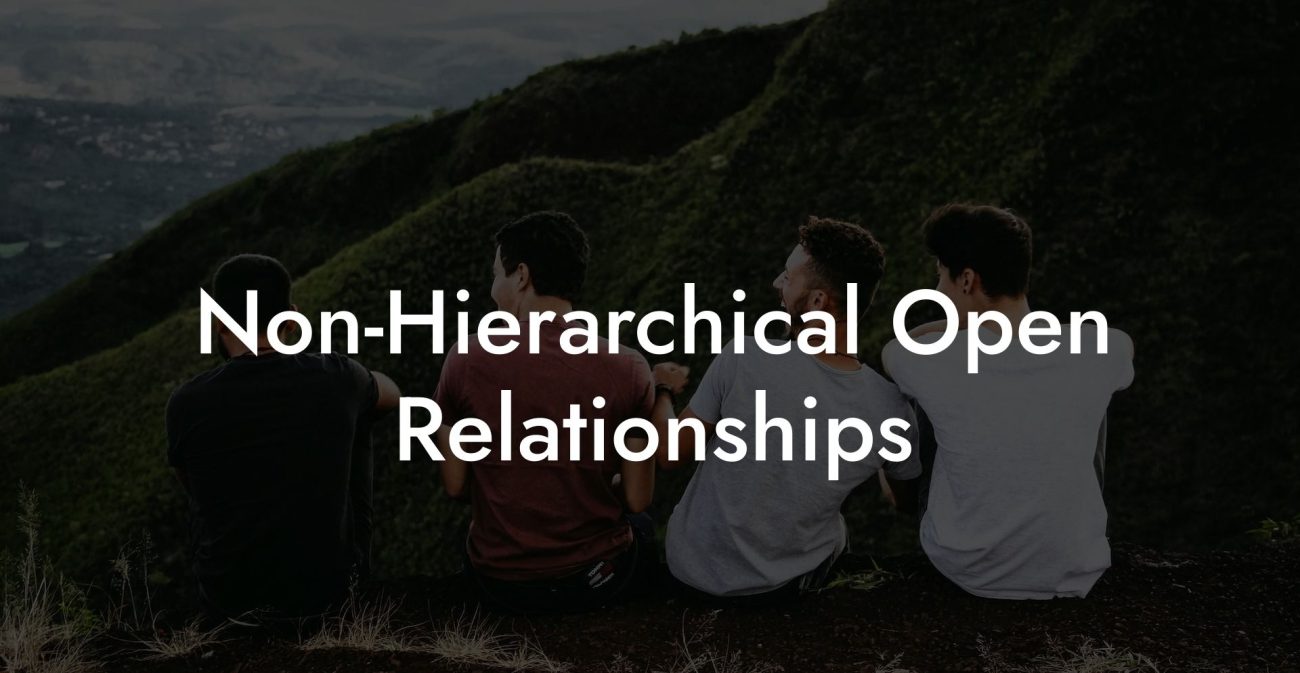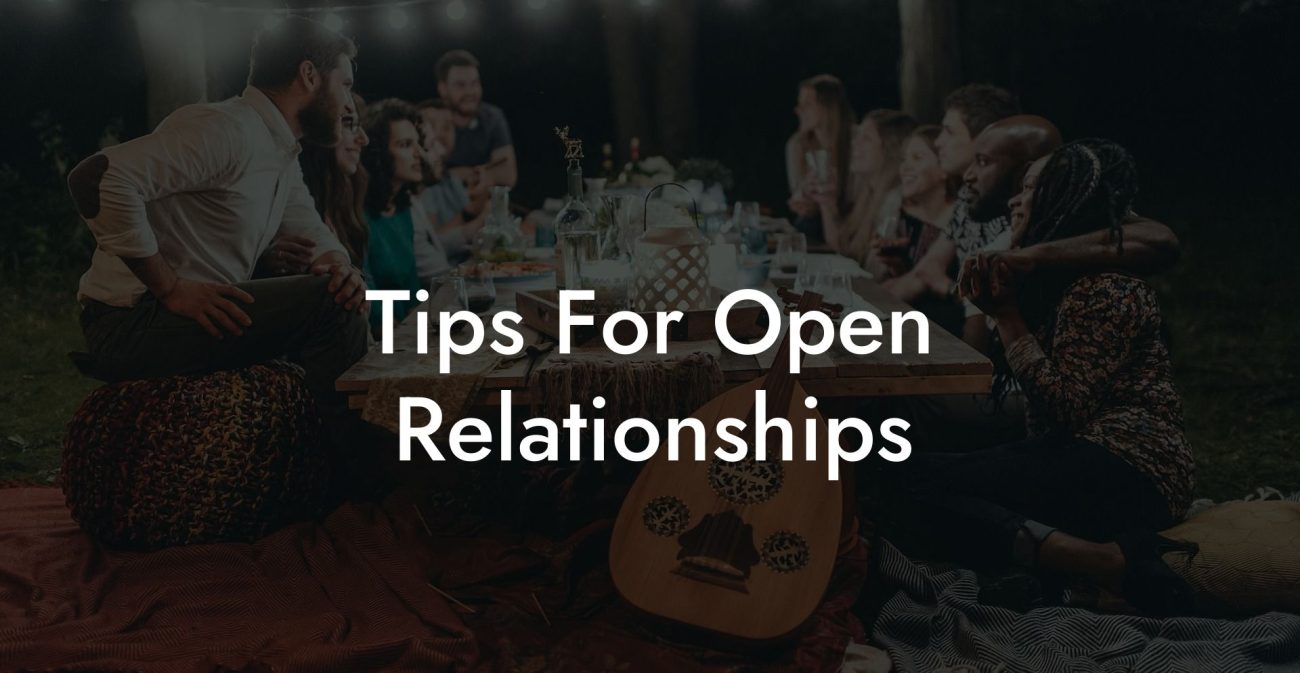Guide to Polyamorous Dating

Picture this: you’re at a dazzling masquerade ball in a futuristic metropolis where every mask conceals not a secret identity, but a myriad of possibilities for love, connection, and adventure. In this world, traditional dating is tossed aside like yesterday’s news, and the vibrant, multi-hued realm of polyamorous dating bursts into life with the energy of neon lights. This guide to polyamorous dating isn’t just an instruction manual, it’s your invitation to explore a cosmos of relationships where emotional constellations align in surprising, outrageous, and unforgettable ways. Buckle up as we take you on a journey through the art, science, and wild beauty of dating multiple people consensually while honoring honesty, communication, and your unique heart’s desires.
Quick Links to Useful Sections
- Understanding Polyamorous Dating
- Defining Polyamorous Dating
- The Philosophy Behind Polyamorous Dating
- Love as an Infinite Resource
- Core Values of Polyamorous Dating
- Benefits of Polyamorous Dating
- Diverse Emotional Fulfillment
- Personal Growth and Self-Discovery
- Enhanced Communication Skills
- Flexibility and Freedom
- Community and Support
- Challenges of Polyamorous Dating
- Managing Jealousy and Insecurity
- Time and Energy Constraints
- Complexity of Negotiating Boundaries
- Social Stigma and Misunderstanding
- Practical Tips for Thriving in Polyamorous Dating
- 1. Prioritize Regular Communication
- 2. Set Clear, Flexible Boundaries
- 3. Engage in Self-Reflection
- 4. Embrace Self-Care
- 5. Educate Yourself About Polyamory
- 6. Build a Support Network
- 7. Be Honest About Your Needs
- Real-Life Stories and Testimonials
- Case Study: Alex’s Journey of Self-Discovery
- Case Study: Casey’s Experience with Boundary-Setting
- Expert Insights on Polyamorous Dating
- Advice from Relationship Coaches and Therapists
- FAQ: Your Polyamorous Dating Questions Answered
Understanding Polyamorous Dating
Defining Polyamorous Dating
Polyamorous dating is the practice of engaging in multiple romantic or sexual relationships simultaneously, with the knowledge and enthusiastic consent of everyone involved. Unlike traditional dating, which often follows a linear path toward exclusivity, polyamorous dating thrives on the idea that love is not a limited resource. Instead, it views emotional and physical connections as abundant possibilities that can coexist harmoniously.
In a polyamorous dating scenario, each relationship can be unique, with its own set of rules, dynamics, and emotional depth. Some connections may be casual and fun, while others grow into profound, life-changing partnerships. The key is that every relationship is built on transparency, clear boundaries, and ongoing communication.
The Philosophy Behind Polyamorous Dating
Love as an Infinite Resource
At the heart of polyamorous dating lies the belief that love isn’t a finite commodity, rather, it’s a boundless energy that expands as you share it. This perspective challenges the traditional notion of “one true love” and invites you to explore multiple connections that enrich your life in diverse ways.
This philosophy is both liberating and transformative. It allows you to honor all aspects of your emotional self, from the need for deep, committed intimacy to the desire for spontaneous, playful encounters. In essence, polyamorous dating encourages you to embrace the full spectrum of human connection without the confines of exclusivity.
Core Values of Polyamorous Dating
- Free Consent: Every relationship begins and evolves based on the voluntary, informed agreement of all parties.
- Transparency: Open, honest communication about feelings, expectations, and boundaries is essential.
- Mutual Respect: Each person’s needs and emotions are valued equally, regardless of the number of relationships involved.
- Flexibility: Relationships are dynamic and ever-changing. Adaptability is key to accommodating growth and change.
- Self-Awareness: Continual self-reflection helps you understand your desires, manage emotions, and engage authentically.
Benefits of Polyamorous Dating
Diverse Emotional Fulfillment
One of the most compelling benefits of polyamorous dating is the opportunity for diverse emotional fulfillment. Each relationship can satisfy different aspects of your emotional needs, whether it’s intellectual stimulation, deep emotional support, or spontaneous fun. This mosaic of connections can lead to a richer, more balanced emotional life.
Personal Growth and Self-Discovery
Navigating multiple relationships forces you to confront your own desires, insecurities, and boundaries. This journey of self-discovery can enhance your emotional intelligence and resilience. By continually negotiating your needs and communicating with multiple partners, you develop a deeper understanding of who you are and what you truly want from your relationships.
Enhanced Communication Skills
Polyamorous dating places a premium on honest dialogue. Regular communication helps you articulate your feelings and negotiate boundaries effectively. Over time, these skills extend beyond your romantic life and improve your overall ability to interact with others, resolve conflicts, and build trust.
Flexibility and Freedom
With polyamorous dating, you are not confined to a single narrative of love. You have the freedom to explore different types of connections, each contributing uniquely to your life. This flexibility means that you can adapt your relationship structures as your personal needs evolve, creating a dynamic, ever-changing tapestry of love.
Community and Support
One of the most enriching aspects of polyamorous dating is the sense of community it fosters. Engaging with like-minded individuals through online forums, local meet-ups, or social events can provide emotional support, practical advice, and a network of resources that enrich your experience.
Challenges of Polyamorous Dating
Managing Jealousy and Insecurity
Despite the philosophical embrace of abundance in love, feelings of jealousy and insecurity are natural human responses. When you see your partner investing time and energy in another relationship, it can trigger emotional responses that may be hard to manage. These feelings can stem from past experiences, societal conditioning, or personal insecurities.
The key is not to suppress these emotions but to understand and address them constructively through honest communication and self-reflection.
Time and Energy Constraints
Balancing multiple relationships requires a significant investment of time and energy. You may find yourself stretched thin trying to maintain quality interactions with each partner, which can lead to burnout if not managed carefully.
Effective scheduling, clear prioritization, and regular self-care are essential strategies to ensure that each connection is nurtured without overwhelming your personal capacity.
Complexity of Negotiating Boundaries
With multiple relationships come diverse needs and expectations. Negotiating boundaries can be complex, as each partner may have different definitions of what is acceptable. This continuous process of boundary-setting requires patience, adaptability, and a willingness to revisit agreements as circumstances change.
Social Stigma and Misunderstanding
Even as polyamory gains more visibility, it still faces significant social stigma. You may encounter judgment or lack of understanding from friends, family, or society at large. This external pressure can sometimes lead to feelings of isolation or self-doubt.
Building a supportive network of like-minded individuals is crucial for counteracting these negative influences and reinforcing your own confidence in your lifestyle.
Practical Tips for Thriving in Polyamorous Dating
1. Prioritize Regular Communication
Establish a routine for regular check-ins with all your partners. Whether it’s a weekly conversation or a monthly group meeting, these sessions can help you discuss your feelings, adjust boundaries, and ensure that everyone is on the same page.
Use digital tools like shared calendars, group chats, or relationship management apps (such as Notion or Trello) to coordinate schedules and plan quality time with each partner.
2. Set Clear, Flexible Boundaries
Boundaries are the framework that supports healthy relationships. Clearly define what you are comfortable with, whether it’s the frequency of dates, the level of emotional involvement, or how much information you share about other relationships. Remember that these boundaries should be flexible and revisited regularly as your relationships and needs evolve.
3. Engage in Self-Reflection
Make self-reflection a regular part of your routine. Journaling, meditation, or even regular conversations with a trusted friend or therapist can help you understand your emotions better, identify triggers for jealousy or insecurity, and adjust your approach accordingly.
4. Embrace Self-Care
Balancing multiple relationships requires robust self-care. Prioritize activities that nourish your body, mind, and spirit, whether it’s exercise, hobbies, or quiet time alone. Taking care of yourself ensures you have the emotional and physical energy to invest in your relationships.
5. Educate Yourself About Polyamory
Knowledge is power. Read books like "The Ethical Slut" and "More Than Two", listen to podcasts such as “Multiamory,” and join online communities to gain insights and practical advice. The more you understand about polyamorous dynamics, the better equipped you’ll be to navigate your own relationships.
6. Build a Support Network
Surround yourself with people who understand and support your lifestyle. Whether through local meet-ups, online forums, or poly-friendly social events, connecting with others can provide invaluable emotional support and practical advice.
7. Be Honest About Your Needs
Honesty with yourself and your partners is critical. Clearly communicate your relationship goals, your expectations, and your limits. This transparency not only prevents misunderstandings but also fosters trust and deepens emotional bonds.
Real-Life Stories and Testimonials
Case Study: Alex’s Journey of Self-Discovery
Alex, who has been exploring polyamorous dating for several years, shares that the journey has been as much about personal growth as it has been about building relationships. Initially, Alex struggled with managing jealousy and time constraints, but through consistent communication and self-reflection, they learned to balance multiple connections without losing a sense of self. Alex’s experience highlights that while polyamorous dating comes with challenges, the rewards in emotional richness and personal development are well worth the effort.
Case Study: Casey’s Experience with Boundary-Setting
Casey entered polyamorous dating with a clear set of expectations but soon discovered that life was far more fluid than anticipated. By regularly revisiting and renegotiating boundaries with their partners, Casey managed to create a dynamic that was both flexible and supportive. This process not only improved their relationships but also led to a deeper understanding of what they truly valued in a connection.
Both Alex and Casey attest that the path of polyamorous dating is marked by continuous learning and adaptation, and that the key to success lies in embracing the journey with honesty and openness.
Expert Insights on Polyamorous Dating
Advice from Relationship Coaches and Therapists
Relationship experts emphasize that the foundation of successful polyamorous dating is open, honest communication. Dr. Elena Rivera, a therapist specializing in non-monogamous dynamics, states, “Polyamorous dating can be incredibly fulfilling if you’re committed to transparency and self-awareness. The journey is not without its challenges, but with effective communication and clear boundaries, you can create a network of relationships that enrich your life.”
Similarly, relationship coach Marcus Lee advises, “Embrace the process of self-discovery. The more you understand your emotional needs and communicate them effectively, the more successful your polyamorous dating experience will be. It’s about finding balance and celebrating the diversity of love.”
FAQ: Your Polyamorous Dating Questions Answered
1. What is polyamorous dating?
Polyamorous dating involves engaging in multiple consensual romantic or sexual relationships simultaneously, with an emphasis on open communication, honesty, and mutual respect.
2. How is polyamorous dating different from traditional dating?
Unlike traditional dating, which typically focuses on forming a singular, exclusive connection, polyamorous dating embraces the possibility of multiple, diverse relationships that coexist harmoniously.
3. What are the benefits of polyamorous dating?
Benefits include diverse emotional fulfillment, opportunities for personal growth, enhanced communication skills, and the freedom to explore varied types of intimacy.
4. What challenges might I face in polyamorous dating?
Common challenges include managing jealousy, balancing time and energy among multiple partners, and negotiating boundaries that may shift over time.
5. How can I manage feelings of jealousy or insecurity?
Open, honest communication is key. Engage in regular self-reflection, discuss your feelings with your partners, and consider seeking support from a therapist or polyamory community if needed.
6. How important is self-care in polyamorous dating?
Self-care is crucial. Maintaining your physical and emotional well-being ensures that you have the energy and resilience to manage multiple relationships effectively.
7. Can polyamorous dating lead to long-term relationships?
Absolutely. Many people find that polyamorous dating can evolve into deep, long-lasting connections, provided that open communication and mutual respect are maintained.
8. How do I communicate my needs and boundaries?
Use “I” statements and regular check-ins to express your feelings clearly. Setting and revisiting boundaries is essential for ensuring that all partners feel secure and respected.
9. Is it necessary to join a poly community?
While not mandatory, joining a supportive community can provide valuable insights, emotional support, and practical advice from others who understand the complexities of polyamorous dating.
10. Where can I find more resources on polyamorous dating?
Explore books like "The Ethical Slut" and "More Than Two", listen to podcasts such as “Multiamory,” and join online communities on Reddit and Facebook dedicated to polyamory for additional support and information.
Resources and Community Support: Your Next Steps in Polyamorous Dating
- "The Ethical Slut" by Dossie Easton & Janet Hardy – A seminal work exploring non-monogamous relationships and ethical dating.
- "More Than Two" by Franklin Veaux & Eve Rickert – Offers practical guidance and insights into managing multiple relationships.
- Podcasts: "Multiamory" and similar shows provide expert advice, real-life stories, and strategies for navigating polyamorous dating.
- Online Communities: Join Reddit communities (e.g., r/polyamory) and dedicated Facebook groups to connect with like-minded individuals and share experiences.
- Therapy and Counseling: Consider consulting a therapist or relationship coach experienced in polyamorous dynamics for personalized guidance and support.
With open communication, self-reflection, and the right community support, you can navigate the vibrant and rewarding world of polyamorous dating, building relationships that are as diverse and fulfilling as the colors of a rainbow. Embrace the journey, remain authentic, and let your heart lead the way into a future of abundant, consensual love.
Lost & confused by all of the terms, types and seemingly made up 3 letter acronyms?? We've got you. Check out our Ethnical Non-Monogamy Dictionary >>
Useful Interruption: Not sure which relationship vibe fits you best? Take our Relationship Test, it’ll give you the real insight into your natural relationship style. Then, dive into our binge-worthy guides (from the tried-and-true to the “wait, that’s a thing?”) and find the perfect relationship type for your life:
- Monogamy
- Open Relationships
- Ethical Non-Monogamy
- Solo Polyamory
- Non-Hierarchical Polyamory
- Hierarchical Polyamory
- Relationship Anarchy
- Swinging
Now back to the main article but yeah take the test...












